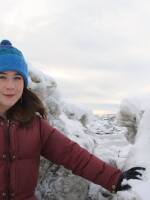It was a rollercoaster salmon season around Bristol Bay this summer. West side districts saw their largest sockeye runs on record. East side districts saw their latest red runs on record. In the end, every river in the bay made its escapement goal.
It is official; 2018 was the largest sockeye salmon run to Bristol Bay on record, and the Alaska Department of Fish and Game has records dating back to 1893. The 2018 Bristol Bay Season Summary, which ADF&G released in September, reiterates the records this year’s run broke. To start with, the total run to Bristol Bay this summer was 62.3 million sockeye. That is 21 percent above the preseason forecast of 51.3 million fish.
The Nushagak District set a new record for the largest single district sockeye salmon harvest at 24.1 million sockeye, accounting for more than half the reds harvested in the bay this summer.
The Togiak District also set a record for sockeye return to its district. Tim Sands, ADF&G area management biologist for the Togiak and Nushagak districts noted that the length of the run rather than a concentrated peak drove up those numbers.
He said, “It started picking up early in July. It still wasn't anything exceptional, it just kind of went on and on and on with good catches,” adding that he thought catch and escapement in the district could have been even higher, but mid-August storms curtailed fishing and the counting towers stopped counting, according to their seasonal schedule in early August.
The exvessel value also broke a record – $281 million for all salmon species. That is almost two and a half times the 20 year average. Sockeye brought an average $1.26 per pound base price.The total harvest across all five districts was 41.3 million sockeye, the second largest harvest in the fishery’s history.

As fishermen observed during the summer, the fish were smaller than average. The average weight of each red was just 5.3 pounds.
According to ADF&G, “Fish that had three years of saltwater residence were closer to long term average weights (5.5 to 6 lbs.), while fish with two years of saltwater residence were smaller than the long term average weights (3.5 to 4.5 lbs).”
Sands pointed out that the majority of the huge Nushagak run is made up sockeye that lived in the ocean for two years, which brought the bay wide average sockeye size down.
“It all kind of points to just that one age class being more numerous and maybe a little bit smaller than average,” said Sands.
He hypothesized that the ocean’s carrying capacity is limited, and fish size could be correlated with the number of fish that returned to Bristol Bay.
“If the number of salmon out there is bigger than average, then there’s less food for each individual fish, and it kind of drives the size or survivorship down,” said Sands.
Obviously, the survivorship in Bristol Bay was high this year. But salmon returns around much of the state were shockingly low.
“The day will come when we don’t have record runs, and we’re in the same situation that some of these other places were in this year, despite our best efforts.” Sands warned. “You don't catch 5.5 million fish in the Nushagak District on average by catching 24 million fish every year. That's not how averages work…There's still the variability of nature that demands that there will be ups and downs.”
In terms of other salmon species, Bristol Bay fishermen harvested 41,000 Chinook, 1.9 million chum, 220,000 pinks, and 140,000 silvers.

The pink harvest was roughly half the 20-year average. The coho harvest, while significantly lower than last year’s harvest of 240,000 silvers, was still above average. Sands said that some fishermen seemed disappointed with this year’s pink and silver fisheries. He explained that several factors likely contributed to the outcomes.
The run timing to the Naknek-Kvichak, Egegik and Ugashik districts was the latest on record. Fishermen who might otherwise have fished for pinks and silvers, were still busy catching reds in those districts. Further, an oil spill from a capsized tender closed the Nushagak District for nearly a week at the end of July.
Sands also said, “By all accounts the fishing, when people were here, wasn’t that great, but we got escapement.”
Taken as a whole, it was a banner year in Bristol Bay. Every river in the bay met or exceeded its escapement goal for reds. In all, 21 million sockeye made it to their natal streams to spawn.
Contact the author at avery@kdlg.org or 907-842-5281.



